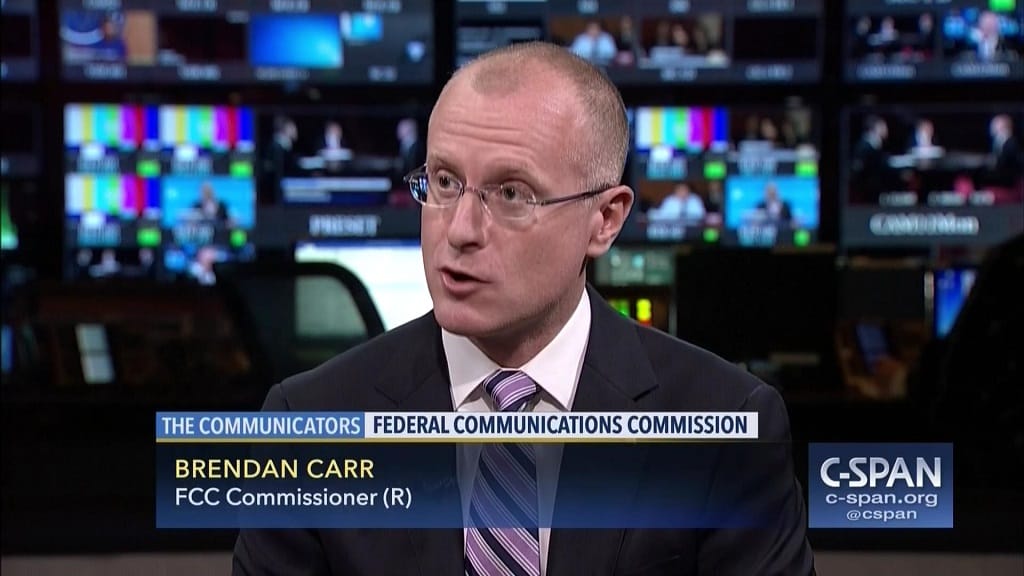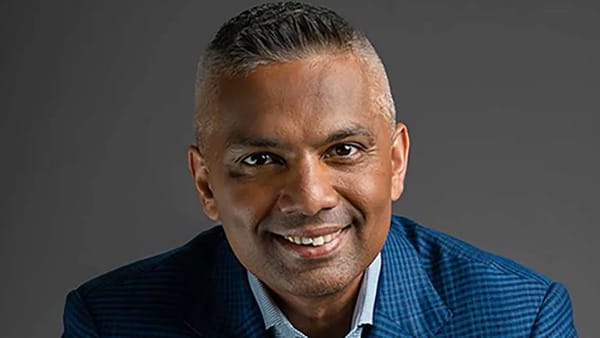Federal Communications Commissioner Brendan Carr Optimistic About Finding Common Ground at Agency
March 24, 2021 — Federal Communications Commissioner Brendan Carr said the regulator has since 2017 seen what he wanted: Broadband speed increases and lower prices. “The approach we adopted in 2017 is working,” he said at the Free State Foundation’s 13th annual telecom policy conference on Tuesday.

March 24, 2021 — Federal Communications Commissioner Brendan Carr said the regulator has since 2017 seen what he wanted: Broadband speed increases and lower prices.
“The approach we adopted in 2017 is working,” he said at the Free State Foundation’s 13th annual telecom policy conference on Tuesday. “Speeds have increased, prices are down, and we see more competition than ever before; we need to keep it that way,” he said, stressing the importance of reinforcing the good work the previous administration did and continues to do.
Carr, who has been a part of the FCC since 2012 in various capacities and through different compositions, said the transition into the new administration is going well.
In contrast to before, when it seemed as though the “sky was falling” and there were many problems with net neutrality, today’s reality is quite different, thanks to Acting Chairwoman Jessica Rosenworcel, he said.
The chairwoman contacted him almost immediately after she asked him to participate an event together on telehealth. There have been a lot of conversations and compromises since that moment, he said.
He said elections do bring some consequences, and undoubtedly have shaken some of the agency’s previous standards with a different party in leadership. However, he said the FCC has been finding common ground, something that “has been all too rare in the past couple of years.”
He added that, in 2016, experts and analysts weren’t painting a very rosy picture for the US future leadership when it comes to 5G. One of the primary reasons cited was the cost and length of time to build out the Internet infrastructure in this country, he said.
“We went from 708 new cell sites in 2017 to over 46,000. The progress is astounding, and not only with towers but with fiber, as we built 450k miles of fiber in just one year alone.”
Spectrum auctions driving the agenda, Carr says
Optimistic on spectrum, he pointed out that at present, there is a lot of it available. “In 2017, the FCC had previously voted in a lot of higher band spectrum options.”
The work of initial prioritization was completed by us before 2017 when we moved in and noticed the lack of midband spectrum in the pipeline. We had to move fast, and we had the first auction for the midband in 2020, with frequencies ranging from 3.5 to 5.5 gigahertz.
Over the last couple of years, he said the FCC has opened that band to intensive use, pushing the midband spectrum a great deal. The future holds the need to create a spectrum calendar with a rough outline of spectrum auctions, including which bands are available for auction and when, he said. “I have already filled in that calendar.”
He said the regulator’s challenge is not with a lack of communication but with coordination. “We need the FCC to take a step back and consider the public interest, how the agency can best achieve the federal missions and how it can best do this. Even if there are going to be disagreements, it is paramount to ensure that the American economy stays competitive.”
Looking ahead, Carr said the 5.9 gigahertz project, which last year was on trial to expand rural broadband access, would be a great beginning to prove that good leadership and compromise are possible between both parties.








